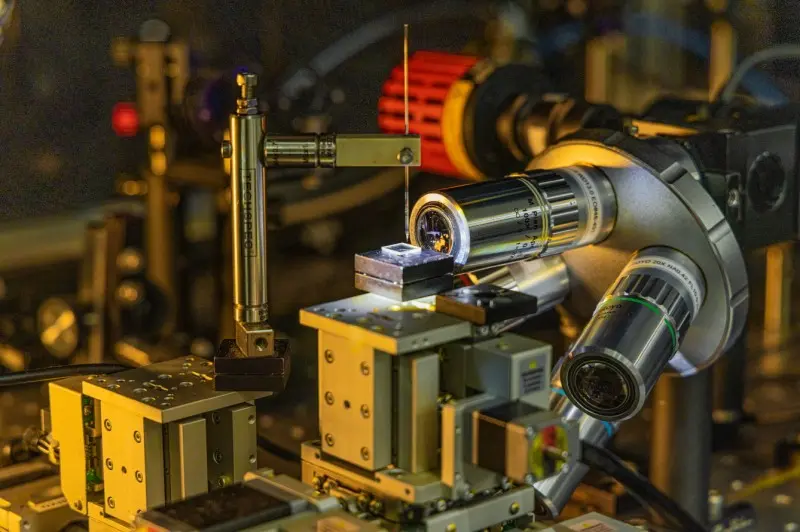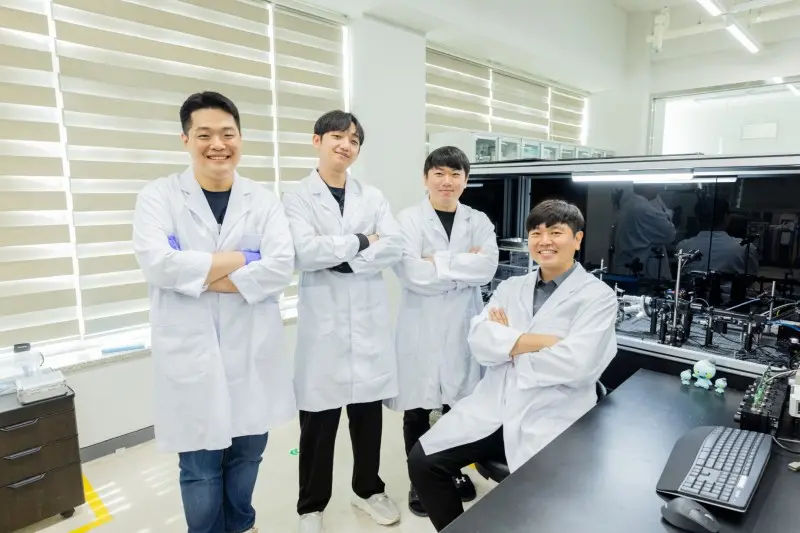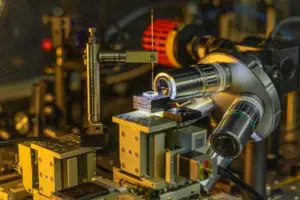Researchers at the Korea Electrotechnology Research Institute (KERI) have achieved a groundbreaking milestone in the realm of advanced display technology. Dr. Jaeyeon Pyo’s team at KERI successfully developed the world’s first 3D printing technology capable of integrating transparent displays and augmented reality (AR) devices, inspired by the fascinating color-changing abilities of chameleons and the vibrant hues found in peacock feathers.

The key innovation lies in the implementation of a three-dimensional diffraction grating, precisely controlling the path of light using nanoscale 3D printing technology. This technology capitalizes on the principle of structural color observed in nature, where light interacts with microstructures at the wavelength level. This diffraction phenomenon results in unique colors known as ‘structural color,’ as seen in the skin of chameleons and the internal microstructure of peacock feathers.
A diffraction grating is a device with regularly arranged microstructures, specifically designed to control the diffraction of light. By shining light on this grating, the reflected light disperses into different paths based on its wavelength, producing vivid structural colors or spectra. Importantly, this 3D printing technology enables precise light control for coloration without the need for dyes.
Achieving such high precision in light control required the development of a very fine diffraction grating. KERI’s nanoscale 3D printing technology, widely regarded as the best in the world, made this possible through a unique approach called ‘lateral printing.’ The lateral printing method involves the 3D printing nozzle moving akin to sewing to print high-density nanowire diffraction gratings with the desired bridge-like shape.
The implications of this technological breakthrough are vast. The transparent nature of the diffraction grating opens up numerous possibilities for future applications, including transparent displays in smart windows, mirrors, and heads-up displays in automobiles. Additionally, AR devices, which already utilize diffraction gratings, can further benefit from this technology. The diffraction grating’s ability to emit different colors depending on deformation also makes it valuable in mechanical engineering and biomedical applications where deformation detection is essential. Furthermore, this technology serves as a powerful tool for optical physics research.
Dr. Jaeyeon Pyo emphasized that this 3D printing technology enables precise implementation of desired structural color in specific locations without limitations regarding substrate materials or shapes. This breakthrough liberates display devices from their formulaic ‘Form-Factor’ constraints, fostering shape diversification and new design possibilities.

The research conducted by Dr. Pyo’s team was recognized for its excellence and featured as a cover article in ACS Nano, a prestigious journal in materials science published by the American Chemical Society. With an impressive JCR Impact Factor of 17.100, placing it in the top 5.7% of its field, the study highlights the significance and potential impact of this technological advancement.
Having completed the patent application process, KERI expects this achievement to garner considerable attention from companies in the display industry. The institute aims to facilitate technology transfer by identifying businesses that could benefit from this cutting-edge 3D printing technology.
It is worth noting that KERI is a government-funded research institute under the National Science and Technology Research Council of the Ministry of Science and ICT. The research leading to this breakthrough was conducted as part of KERI’s basic project, ‘Development of 4D printing technology for circuit/housing integrated devices.’ Additionally, Dr. Jaeyeon Pyo holds an adjunct associate professor position at the University of Science and Technology (UST), further reinforcing the institute’s commitment to research and education in the field of technology.
Reference
Bae, J., Yoo, C., Kim, S., Ahn, J., Sim, H. H., Kim, J. H., Kim, J. H., Yoon, S.-Y., Kim, J. T., Seol, S. K., & Pyo, J. (2023). Three-Dimensional Printing of Structural Color Using a Femtoliter Meniscus. ACS Nano, 17(14), 13584–13593. https://doi.org/10.1021/acsnano.3c02236

